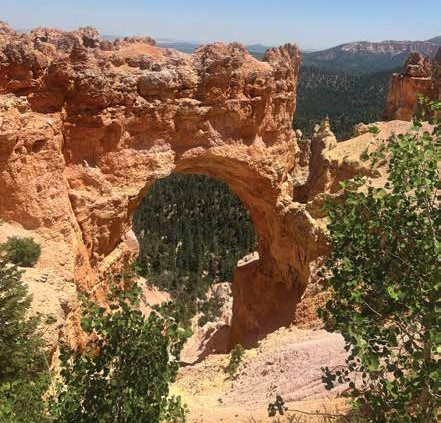Go West Young Man
Written and photographed by Lori Boatfield
The young man in question is my eldest son, Rafe, and he did indeed go west
this summer for his senior trip, with his parents, grandparents and siblings in tow.
Flying out of Huntsville with a stop in Dallas, then into Las Vegas, we boarded
our flight just before the sun rose, but a mechanical issue delayed us for more
than an hour. We nearly missed our connecting flight in Dallas and literally
ran the 30 gate distance between planes. This set the tone for our days of
hiking (though never at the pace of our airport run) with an average of 10 miles
walked per day. Our Bryce Canyon trek was the equivalent of 70 flights of
stairs.
Day one was a flying and driving day (we rented a 10-passenger van so the
group could travel together.) We made a stop at Hoover Dam for a short tour
and photos at the top of the massive structure where Nevada and Arizona
meet, standing in two time zones simultaneously. We then drove four hours to
the South Rim of the Grand Canyon, staying at a quaint lodge in the park called
The Yavapai. We spent the next two days taking in the views of the canyon and
exploring Grand Canyon Village.
Recommended:
-A stop at the historic El Tovar Hotel, constructed in 1905, which sits directly
on the South Rim
-Visit Hopi House, designed by famed architect Mary Colter in 1904,
modeled after the 1,000-year-old pueblo dwellings of Hopi villages
-The wind is particularly strong at the rim at Grand Canyon Village, so
literally, hold on to your hat
Day four found us back in the van driving to Page, Ariz., where we toured
Lower Antelope Canyon, offering mesmerizing views. Known as Hasdeztwazi or
“Spiral Rock Arches” in Navajo, Lower Antelope Canyon’s formation over
millions of years by water and wind has resulted in its stunning textures and
shapes. A photograph taken in Antelope Canyon, entitled, “Phantom” by
landscape photographer Peter Lik sold for 6.5 million to a private collector in 2014.
Page also boasts Horseshoe Bend, where we took a 1.5 mile hike
 to the overlook of the picturesque turn of the Colorado River near
to the overlook of the picturesque turn of the Colorado River near
Glen Canyon.
Recommended:
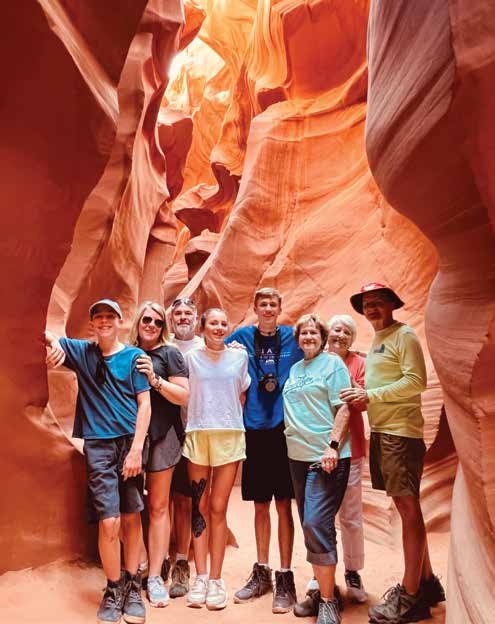 – If you’re traveling in the summer, the temperatures are punishing.
– If you’re traveling in the summer, the temperatures are punishing.
You can’t take bags or backpacks on the Antelope Canyon
tour because of the tight spaces, but it is recommended to take
water along with you for the 50-minute tour. The temperatures
hovered at 110 degrees on our day in Page.
————————————————————————-
We spent the remainder of our trip lodging at our “headquarters,”
a house in Kanab, Utah, centrally located between Bryce Canyon
National Park and Zion National Park. Day five was spent at Bryce
Canyon, which was my son Bryce’s favorite spot on the trip. The
rock formations are dubbed hoodoos, meaning “to bewitch,” and
they certainly did. Hoodoos range from human-height to that of a
10-story building. My husband, sons and I took the 1.8-mile trek
to the floor of the canyon on the Queen’s Garden Trail and were
rewarded by seeing the Queen Victoria hoodoo, which resembles
a famous photograph of the royal.
We spent day six at Zion National Park. This park’s vistas are from
the bottom of the canyon looking up. Traveling to the visitor’s center,
we drove through the Mt. Carmel/Zion tunnel, a little over a mile
long, through the rock. We walked the Pa’rus Trail, an easy, flat
walk about 2.5 miles, following the Virgin River to Canyon Junction,
taking the shuttle to the Temple of Sinawava to hike Riverside Trail,
a more challenging walk, which winds beside the river.
Recommended:
-Rent water shoes and hiking sticks at the Visitor’s Center and
hike the Narrows – a nine-mile trek in the river through the
narrowest part of the canyon. With the self-guided option,
hikers can take in as much or as little of this trail as they choose.
-Visit the Zion Lodge, built in the 1920s, nestled into the
surrounding cliffs with sweeping views of Zion’s famous
sandstone towers.
-Bike the Pa’rus Trail – electric or manual bikes can be rented at
the visitor’s center. The path is mostly flat and easily navigable.
We spent the final evening back in Las Vegas, showing the kids the lights and sights of the strip, before taking an early morning flight back to Huntsville.
The memories we made can’t be measured against the cost of plane tickets, vehicle rentals or lodging. The blessing of sharing that time with our children and our parents was an unforgettable blessing.
Arctic Ocean
Motorcycle Trip
Written by Steve Babin, Photos by Dimitrios Skiadopoulos, Federico Morales Zimmermann & Steve Babin
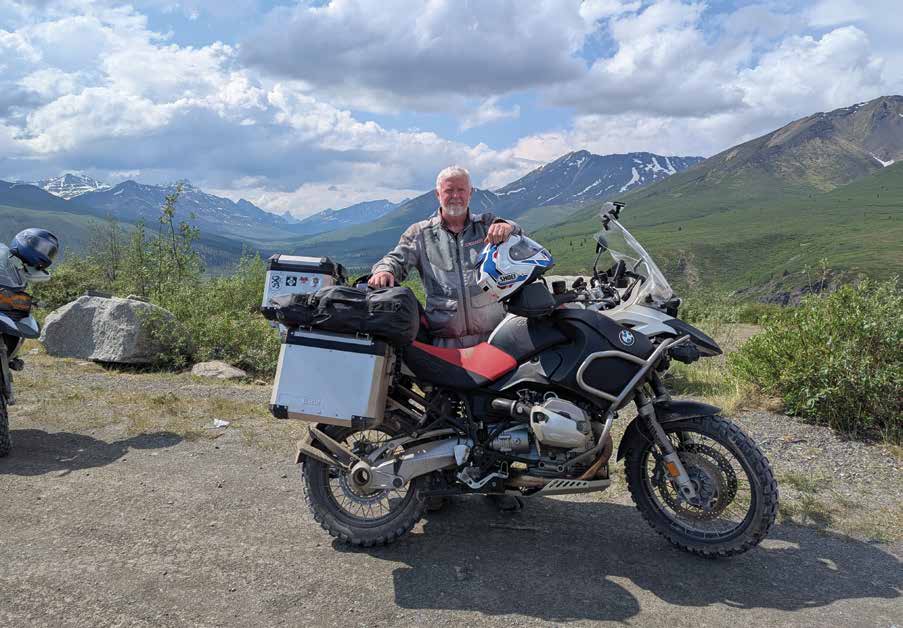 In 2023, I had just wrapped up a 10-day motorcycle trip in Costa Rica with my
In 2023, I had just wrapped up a 10-day motorcycle trip in Costa Rica with my
friend Dimitrios. We had a great time, and that trip taught me that these far-off,
“bucket list” type trips were more within reach than I had previously thought. I
started looking for the next adventure and pretty quickly set my sights on the
Dempster Highway in far NW Canada, which brings you all the way to the
Arctic Ocean.
The Dempster Highway starts just outside of Dawson City in the Yukon and
continues north for about 550 miles, ending in the Village of Tuktoyaktuk on
the Arctic Ocean. It’s a government road made of dirt and gravel. There are
serious potholes, washboards and deep gravel. When it’s dry, it’s extremely
dusty; when it’s wet, it’s very slick. It can be very challenging on two wheels.
We decided to shoot for mid-June 2025 to start and figured it would take
about a month to get there and back. Logistically, there was a lot to consider,
and solid contingency plans had to be firmly in place for whatever might go
wrong.
Dimitrios and I left June 14, trailering the motorcycles across the United States
and up through Canada to Whitehorse, Yukon Territory, where we met our friend
Federico. From there we continued to Dawson City. There were wildfires closing
roads along the way, and we really got lucky with our timing, as we were not
delayed by them. After unloading the bikes, we set off on the Dempster on June 24.
We spent six days on the Dempster Highway. The views were stunning and the
riding was challenging, even stressful at times as the conditions were constantly
changing. We crossed the Arctic Circle on June 25 and took a break to enjoy
the milestone. We reached Tuktoyaktuk and the Arctic Ocean on June 27. We
celebrated at the “End of the Road” and prepared for the return trip. The ride
back south was just as difficult and beautiful as the ride north.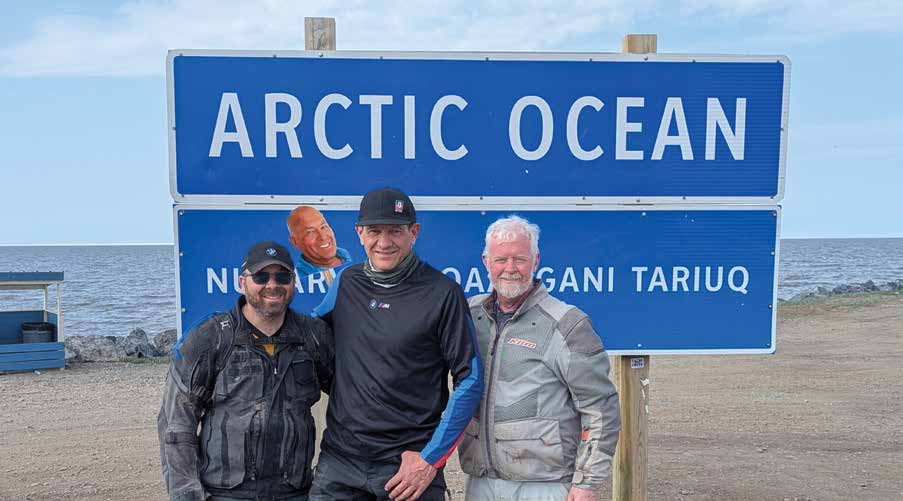
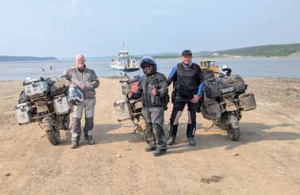
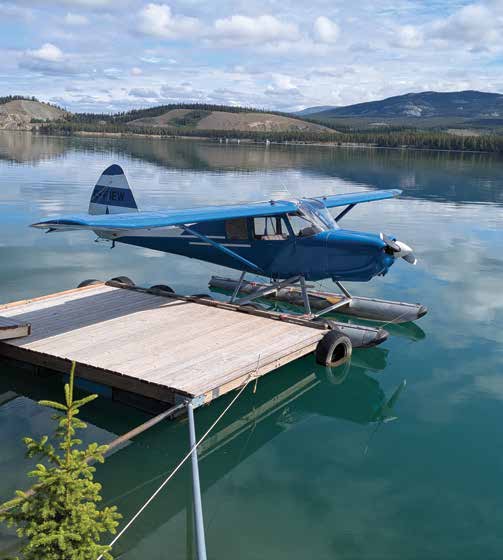
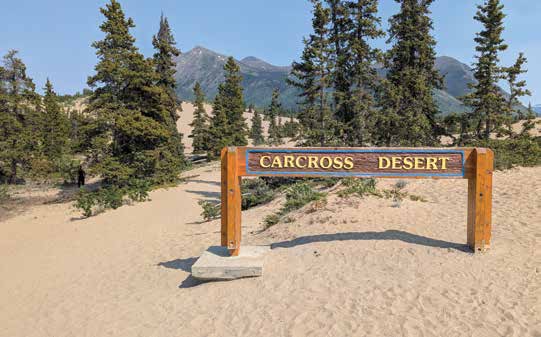
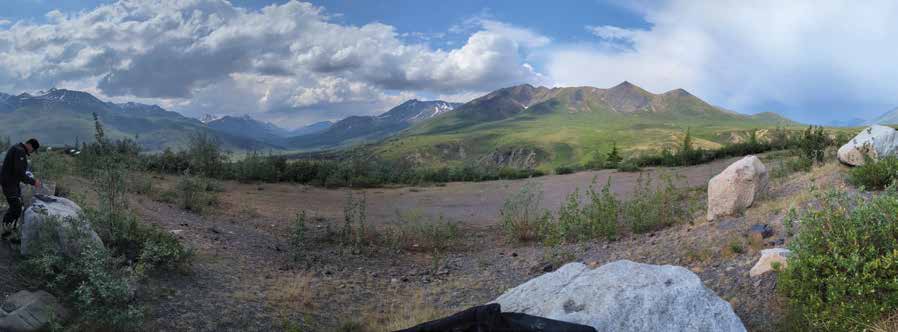
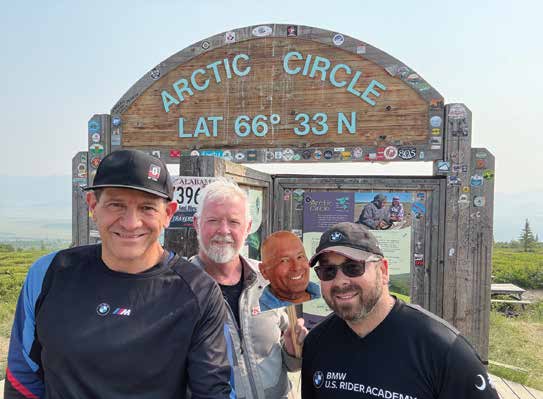
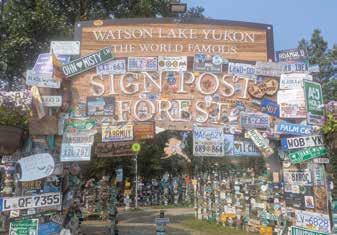
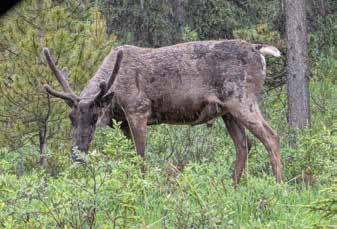
It’s hard to describe the remoteness… looking out on a vast landscape and seeing no evidence of civilization. It reminded us to be careful, as medical help is quite far away. The people we met were exceptionally welcoming, and we were grateful for their hospitality. They all seemed genuinely happy that we had traveled to their communities. We were there during the warmest part of the year, and I can’t imagine how hardy people have to be to have survived the winters up there for tens of thousands of years. We saw a lot of wildlife – from bears, caribou, and moose to marmots, porcupines, and beaver.
After the long drive back south, I arrived back home on July 11, happy to be reunited with Josie.
All in all, this trip challenged us in many ways. And it was just what we were looking for!





